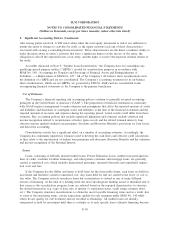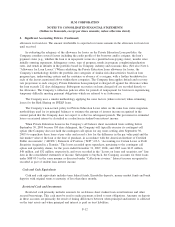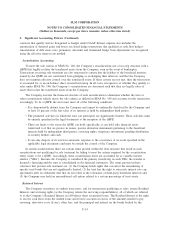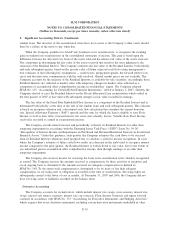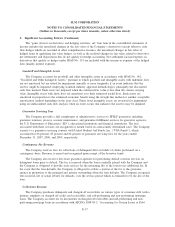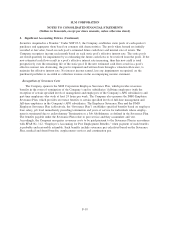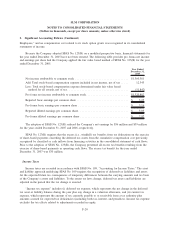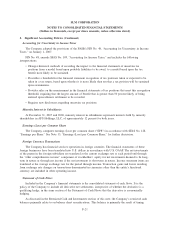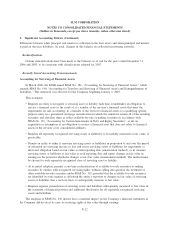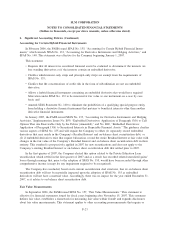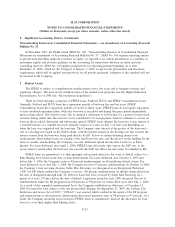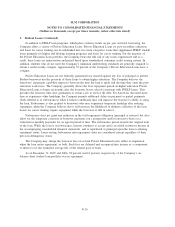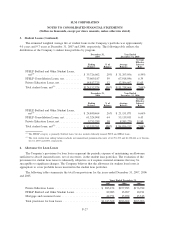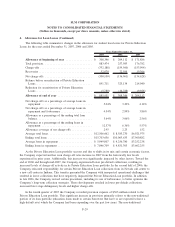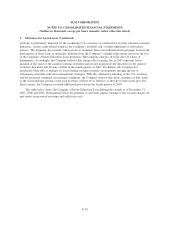Sallie Mae 2007 Annual Report Download - page 141
Download and view the complete annual report
Please find page 141 of the 2007 Sallie Mae annual report below. You can navigate through the pages in the report by either clicking on the pages listed below, or by using the keyword search tool below to find specific information within the annual report.
2. Significant Accounting Policies (Continued)
Employees,” and no compensation cost related to its stock option grants was recognized in its consolidated
statements of income.
Because the Company adopted SFAS No. 123(R) on a modified prospective basis, financial statements for
the year ended December 31, 2005 have not been restated. The following table provides pro forma net income
and earnings per share had the Company applied the fair value based method of SFAS No. 123(R) for the year
ended December 31, 2005.
Year Ended
December 31,
2005
Net income attributable to common stock .................................. $1,360,381
Add: Total stock-based compensation expense included in net income, net of tax ..... 12,343
Less: Total stock-based compensation expense determined under fair value based
method for all awards, net of tax ....................................... (51,842)
Pro forma net income attributable to common stock ........................... $1,320,882
Reported basic earnings per common share ................................. $ 3.25
Pro forma basic earnings per common share ................................ $ 3.16
Reported diluted earnings per common share ................................ $ 3.05
Pro forma diluted earnings per common share ............................... $ 2.97
The adoption of SFAS No. 123(R) reduced the Company’s net earnings by $36 million and $39 million
for the years ended December 31, 2007 and 2006, respectively.
SFAS No. 123(R) requires that the excess (i.e., windfall) tax benefits from tax deductions on the exercise
of share-based payments exceeding the deferred tax assets from the cumulative compensation cost previously
recognized be classified as cash inflows from financing activities in the consolidated statement of cash flows.
Prior to the adoption of SFAS No. 123(R), the Company presented all excess tax benefits resulting from the
exercise of share-based payments as operating cash flows. The excess tax benefit for the year ended
December 31, 2007 was $30 million.
Income Taxes
Income taxes are recorded in accordance with SFAS No. 109, “Accounting for Income Taxes.” The asset
and liability approach underlying SFAS No. 109 requires the recognition of deferred tax liabilities and assets
for the expected future tax consequences of temporary differences between the carrying amounts and tax basis
of the Company’s assets and liabilities. To the extent tax laws change, deferred tax assets and liabilities are
adjusted in the period that the tax change is enacted.
“Income tax expense” includes (i) deferred tax expense, which represents the net change in the deferred
tax asset or liability balance during the year plus any change in a valuation allowance, and (ii) current tax
expense, which represents the amount of tax currently payable to or receivable from a tax authority plus
amounts accrued for expected tax deficiencies (including both tax, interest, and penalties). Income tax expense
excludes the tax effects related to adjustments recorded in equity.
F-20
SLM CORPORATION
NOTES TO CONSOLIDATED FINANCIAL STATEMENTS
(Dollars in thousands, except per share amounts, unless otherwise stated)


